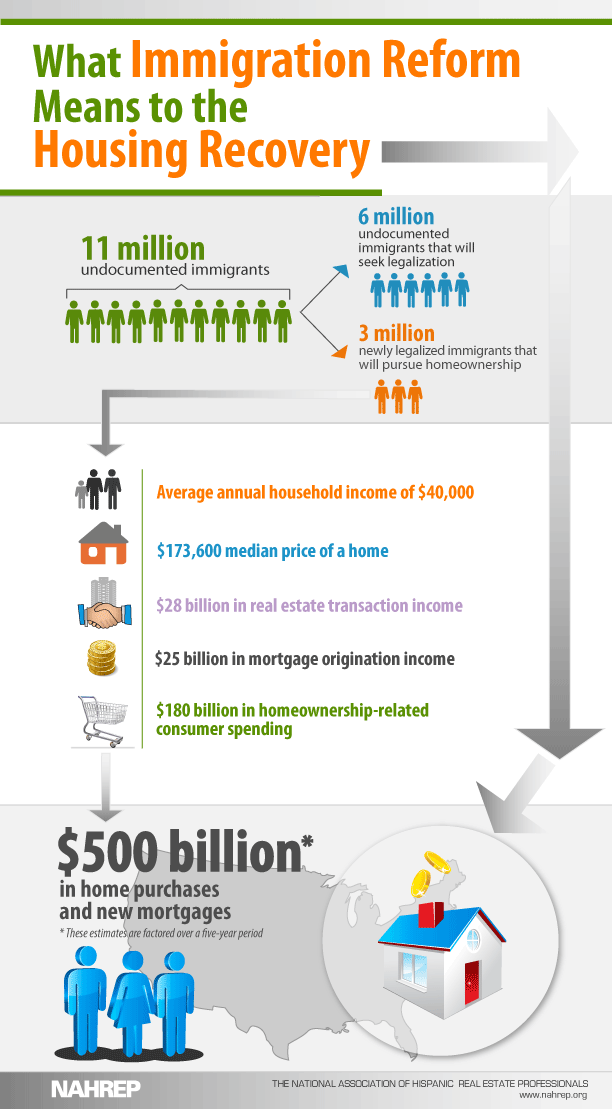The immigration reform bill will finally get it's debut on the floor of the Senate tomorrow with potentially big implications for the Housing and Mortgage markets. Though not specifically related to immigration reform, the CAP recently argued that the future mortgage market will benefit from providing more credit access to socioeconomic groups that have had less access in the past (read more).
Before that, the National Association of Hispanic Real Estate Professionals (NAHREP) was out with a slightly different take on the same core concept: more participants in the housing/mortgage means more business. The Association estimates that some 6 million undocumented immigrants would pursue legalization--about half of those with the desire and the economic resources to buy a home.
The estimates suggest a new pool of roughly 3 million new prospective homeowners, capable of purchasing a home at the median price of $173,000. NAHREP based its projections on updated data and the approach it used for its 2004 study "The Potential for Homeownership Among Undocumented Workers." Using information from that study it estimates that those 3 million prospective homeowners would pump about $500 billion into the housing market.
But that would be just the beginning, NAHREP said. The chain reaction triggered by those home purchases would bring an additional $233 billion in spending for origination fees, real estate commissions, and consumer spending associated with homeownership. These expenditures are factored in over a five year period.

"Foreign-born householders have a high value and strong desire for homeownership," said Juan Martinez, NAHREP president. "They have been here in our midst for years, working and participating in our economy. Legitimizing them through immigration reforms would finally give them the access and the confidence to buy homes."
The press released said that other housing and
corporate leaders that work closely with the underserved market agree
that legalization will spark swift interest in homeownership among
these Latinos because they are already established in communities
here in the U.S.







